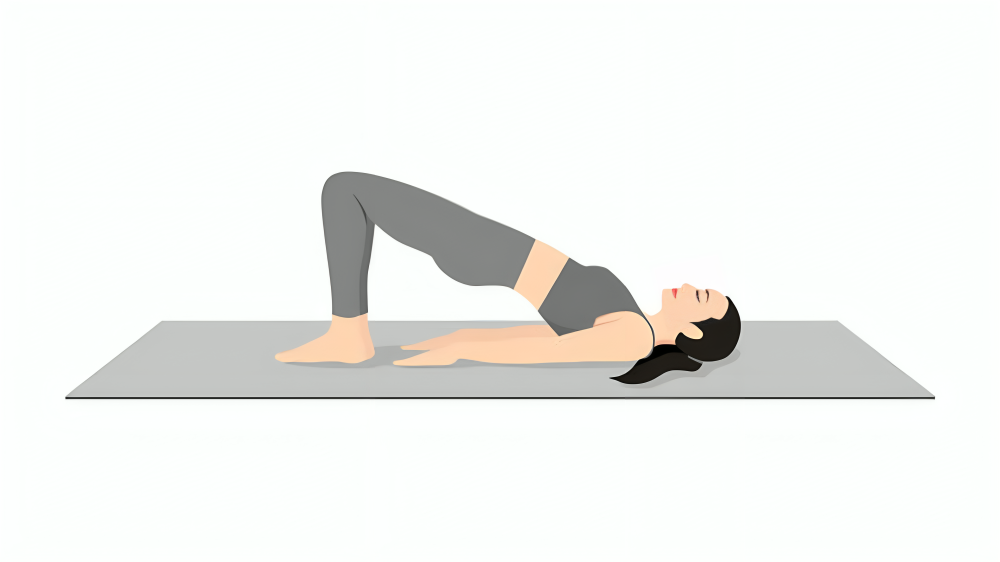
What is Setu Bandhasana?
Setu Bandhasana is derived from three Sanskrit words: “Setu” meaning bridge, “Bandha” meaning lock or bind, and “Asana” meaning pose. So, in English, it’s literally the Bridge Pose. The pose resembles a bridge when performed, with the body forming an arch from the shoulders to the knees.
How to Perform Setu Bandhasana: A Step-by-Step Guide
Lie Down on Your Back: Start by lying flat on your back with your arms resting beside you. Keep your feet hip-width apart and close to your buttocks. Your knees should be bent, and your feet firmly planted on the floor.
Position Your Feet and Arms: Ensure your feet are parallel and aligned with your knees. Your arms should be straight, palms facing down. You can keep your hands by your sides or clasp them together under your back for a deeper stretch.
Lift Your Hips: Press your feet into the floor and slowly lift your hips towards the ceiling. As you rise, try to create a straight line from your shoulders to your knees. Engage your core and thighs to support the lift.
Hold the Pose: Once your hips are lifted, hold the position for 10-30 seconds, depending on your comfort level. Breathe deeply and steadily while maintaining the pose.
Release Gently: To come out of the pose, exhale and slowly lower your hips back down to the mat. Take a moment to rest before moving on to your next pose.
Benefits of Setu Bandhasana
Strengthens the Back and Core: This pose engages the muscles in your lower back, glutes, and core, helping to build strength in these areas over time.
Stretches the Chest and Neck: The Bridge Pose provides a gentle stretch to your chest, neck, and spine, improving flexibility and posture.
Reduces Stress and Anxiety: By opening the chest and allowing deeper breaths, Setu Bandhasana can help calm the mind, reduce stress, and alleviate symptoms of anxiety.
Improves Digestion: This pose stimulates the abdominal organs, which can aid in better digestion and relieve issues like constipation.
Enhances Circulation: The pose helps improve blood circulation, particularly in the spine and lower body, which can leave you feeling energized and revitalized.
Therapeutic for Back Pain: Regular practice of Setu Bandhasana can relieve back pain and stiffness, especially if you spend long hours sitting.
Boosts Mood: By stimulating the nervous system, this pose can elevate your mood and help combat feelings of depression.
It’s here Supta Padangusthasana how to do it and what are the Benefits
FAQs
Q: Can I perform Setu Bandhasana if I have back pain?
A: Yes, but it’s important to listen to your body. If you have severe back pain, consult with a healthcare professional before attempting this pose. Using props for support can also help make the pose more comfortable.
Q: How often should I practice Setu Bandhasana?
A: You can practice this pose daily or as part of your regular yoga routine. It’s a great way to start or end your yoga session.
Q: What should I do if I can’t lift my hips very high?
A: That’s perfectly okay! Focus on engaging your core and lifting as much as you can. Over time, your flexibility and strength will improve.

